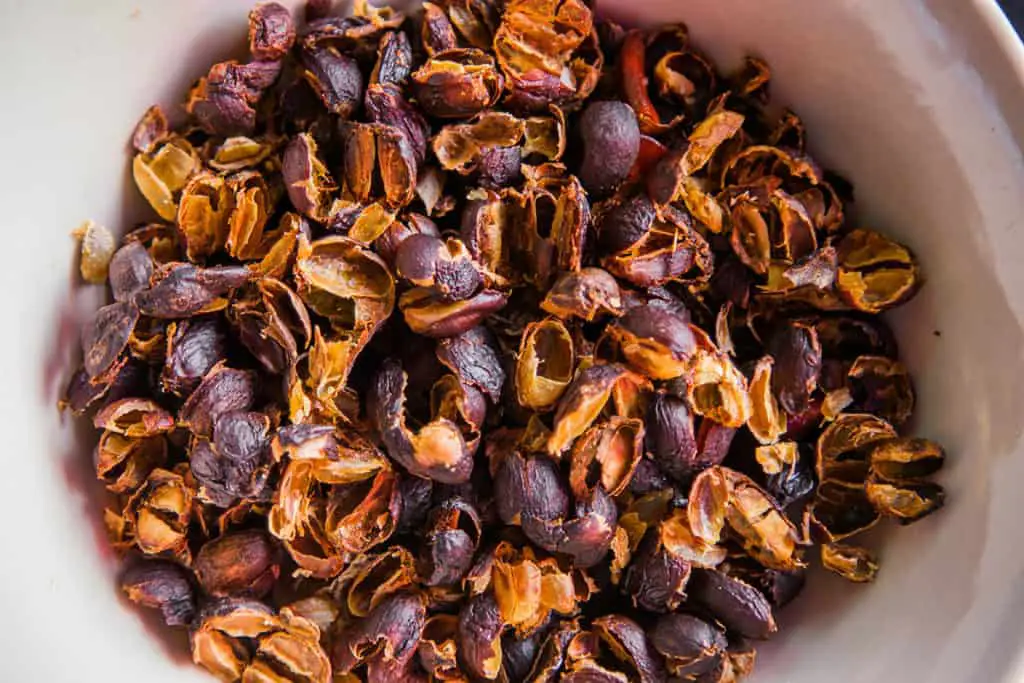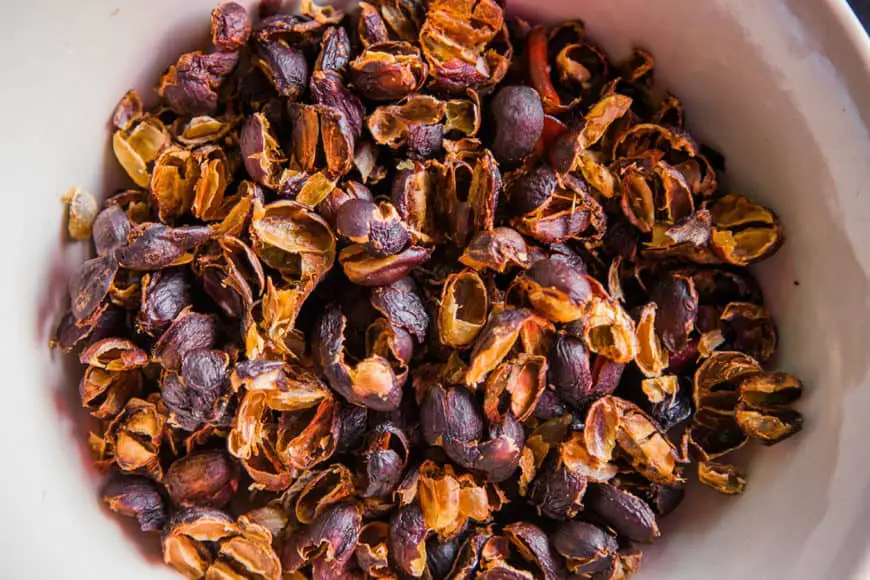
Cascara, often called coffee cherry tea, is a unique drink made from the dried husks of coffee cherries—the fruity layer surrounding the coffee bean. The word “cascara” means “husk” or “shell” in Spanish, perfectly describing this overlooked part of the coffee plant.
Unlike coffee, which comes from the roasted bean, cascara offers a sweet, fruity flavor, with notes of hibiscus, cherry, or rosehip. It’s not quite tea and not quite coffee, but it’s gaining fans in specialty coffee shops for its refreshing taste and sustainability. Let’s explore what cascara is, how it’s made, and why it’s worth trying.
What Makes Cascara Unique?
Cascara has a light, fruity flavor that sets it apart from coffee’s bold, roasted taste. Depending on the coffee cherry’s origin and processing, it might taste like dried fruit, tamarind, or even floral tea. It’s brewed like tea, by steeping the husks in hot water, which makes it smoother and less acidic than coffee. Cascara also contains caffeine—less than coffee but enough for a gentle boost (about 5–10 mg per 100ml, compared to 40 mg for coffee).
What’s special about cascara is its origin story. Coffee cherries are usually discarded after the beans are removed, but turning the husks into a drink reduces waste and gives farmers an extra source of income. It’s a win for sustainability and a chance to enjoy a new side of coffee.
Where Does Cascara Come From?
Cascara comes from the same coffee-growing regions as your morning brew. Countries like Colombia, Ethiopia, Costa Rica, Guatemala, Kenya, and Panama produce high-quality cascara, often tied to their coffee harvests. In places like Yemen and Ethiopia, farmers have brewed coffee husk drinks for centuries, calling them “qishr” or “hashara.” But only in the last decade has cascara caught on globally, thanks to the specialty coffee movement.
Today, you can find cascara in artisanal cafés, online stores, or even direct from farmers. Some producers also use the husks as fertilizer or animal feed, but brewing them as tea is the tastiest way to repurpose this coffee byproduct.
How Is Cascara Made?
Making cascara starts with ripe coffee cherries, hand-picked or machine-harvested. The cherries are processed to separate the bean from the outer husk and pulp, using one of two methods:
- Wet Processing: Cherries are pulped, and the beans are washed, leaving clean husks with bright, fruity flavors.
- Dry Processing: Cherries are dried whole, then hulled, giving husks a richer, earthier taste.
The husks are spread on drying beds or patios, turned regularly to dry evenly and prevent mold. Once fully dry (about 10–14 days), they’re sorted to remove debris and packed for sale. The result is a lightweight, reddish-brown husk ready to brew.
Cascara vs. Coffee vs. Tea
Cascara is often confused with coffee or tea, but it’s distinct. Here’s a quick comparison:
| Drink | Source | Preparation | Flavor | Caffeine (per 100ml) |
|---|---|---|---|---|
| Cascara | Coffee cherry husk | Steeped in hot water | Fruity, floral, light | 5–10 mg |
| Coffee | Roasted coffee bean | Brewed with hot water | Bold, roasted, nutty | 40 mg |
| Black Tea | Camellia sinensis leaves | Steeped in hot water | Earthy, tannic | 20–50 mg |
Cascara is steeped like tea, not brewed like coffee, which keeps its flavor delicate. Unlike coffee, it’s not roasted, so it lacks the bitter, toasty notes. Compared to black tea, it’s fruitier and less tannic, with a lower caffeine kick.
How to Brew Cascara
Brewing cascara is simple and similar to making tea. Here’s a step-by-step guide:
- Measure the Husks: Use 5–10g of cascara per 250ml of water. Start with 5g for a lighter flavor, 10g for a stronger brew.
- Heat the Water: Bring water to 190°F (88°C). Too hot, and it can taste bitter; too cool, and it won’t extract fully.
- Steep: Place cascara in a cup or teapot, pour in hot water, and steep for 3–4 minutes.
- Strain: Use a tea strainer to remove the husks. For iced cascara, pour over ice after straining.
- Customize: Add a pinch of cinnamon, a drizzle of honey, or a splash of lemon to enhance the fruity notes. Go easy, as cascara is naturally sweet.
You can also cold-brew cascara by steeping 10g in 250ml cold water for 12–24 hours in the fridge, then straining. It’s a refreshing summer option.
Health Benefits of Cascara
Cascara is rich in antioxidants, particularly polyphenols, which may reduce inflammation and support digestion. Some studies suggest coffee cherry husks have anti-aging properties due to their high antioxidant content, but more research is needed. Cascara’s low caffeine content makes it a good choice for those cutting back on coffee but still wanting a mild lift. However, if you’re sensitive to caffeine, drink it in moderation, as a 250ml cup might have 12–25 mg of caffeine.
Why Drink Cascara?
Cascara is a great way to try something new while supporting sustainable coffee farming. Its light, fruity flavor pairs well with pastries or fruit-based desserts, and it’s versatile enough for hot or iced drinks. By choosing cascara, you’re helping farmers make use of what was once waste, reducing the environmental impact of coffee production.
Final Thoughts
Cascara is more than a coffee byproduct—it’s a delicious, sustainable drink with a bright, fruity flavor. Whether you’re a coffee lover looking for a low-caffeine alternative or a tea drinker wanting something different, cascara is worth a try. Brew it at home, experiment with flavors, or seek it out at your local café. You might just find your new favorite drink!

